Photographs: Courtesy, UIDAI Devjyot Ghoshal in Dohakatu
On a torrid March afternoon, Charka Pahan walks into a small, pink room on the first floor of the Panchayat building at Tarup, a village some 45 kilometres from Jharkhand's capital city, holding on to a piece of paper.
Morpant Chowdhury, a banking correspondent, is waiting there with an internet-connected computer and a micro ATM, along with a wad of money, ready to make payments.
For the next few minutes, Chowdhury takes each of Pahan's fingers and presses them into the biometric scanner built into the white and yellow rectangular ATM device, which the Unique Identification Authority of India (UIDAI) believes will be the route to salvation for millions of Indians who, for a multitude of reasons, are so far unable to receive thousands of crores of social welfare payments and subsidies every year.
...
As Aadhaar debuts in Jharkhand, doubts arise
After each digit is scanned carefully and numbers on the paper slip cross-checked, Chowdhury nods resignedly and informs Pahan that it's not going to happen, yet again -- that the Rs 8,814 crore (Rs 88.14 billion) Unique Identification Device (UID) programme is again unable to deliver Pahan's Rs 120 daily wage for levelling land under the Mahatma Gandhi National Rural Employment Guarantee Act (MNREGA).
Pahan's case is unusual, admittedly, for the UIDAI's Aadhaar -- a 12-digit individual identification number -- is already showing results in the handful of pilot projects for UID-linked MNREGA payments that have been rolled out across Jharkhand.
A close look at these UID pilots reveal two bitter truths about this massive, technology-driven exercise: that Aadhaar by itself is not a system devoid of flaws, and that the UID is certainly no panacea to plug leaks in India's massive social welfare schemes.
...
As Aadhaar debuts in Jharkhand, doubts arise
Dodgy digits
Like millions of others registered with UIDAI, Pahan is a farm worker, and of all his body, it is probably his hands that take the brunt of what he does for a living.
Despite the tough protocol that UIDAI put in place during enrollment, the quality of his fingerprints have repeatedly failed him during the biometric authentication required before any UID-linked transaction. Unsurprisingly, for many in Tarup, the real fear resides in their fingers.
"During the paddy harvests, our hands chafe badly. What will be the use of UID then? How will we be able to get our money?" asks a worried Hatti Mahato.
...
As Aadhaar debuts in Jharkhand, doubts arise
UIDAI, in a recent report, points out that the 'Failure to Enrol' (FTE) rate of UIDAI Biometric system is 0.14 per cent, or that 99.86 per cent of the population can be uniquely identified by the biometric system. But it is unwilling to provide any numbers on the failure to authenticate after enrolment, a critical barometer of the scheme's success.
UIDAI officials believe that in a rush to reach their targets, the enrolment agencies involved in the first phase may not have accurately followed the prescribed guidelines, and this has added to the problem of deteriorating fingerprint quality among farm workers.
In Seraikela-Kharsawan district's Kasidi village, more than 10 out of 247 MNREGA workers who have had their job cards linked with Aadhaar cannot take advantage of the UID scheme because of authentication-related problems; many of these are women who work with sharp sickles to weave bamboo baskets.
...
As Aadhaar debuts in Jharkhand, doubts arise
Some seven out of 57 pensioners at Ramgarh's Dohakatu village, another pilot project venue, have been unable to receive old-age benefits as their fingerprints cannot be read by the micro ATMs, district officials attest.
On the face of it, these numbers might seem insignificant. But as the Aadhaar programme grows in size, adding millions more to its rolls, and beneficiaries mature, if the pilot projects are anything to go by, dodgy digits could emerge as a significant worry.
While, apart from fingerprints, the UIDAI also took iris scans of each registered beneficiary, officials say that there are no immediate plans to introduce iris-based authentication as it currently is not economically viable.
...
As Aadhaar debuts in Jharkhand, doubts arise
Photographs: Rediff Archives
Connectivity conundrum
Located diagonally opposite the ostentatiously named but barebones amusement park, Fun Castle, on the outskirts of Ranchi, the Ratu branch of the Bank of India (BoI), headed by Mayank Dhar Tiwari, is one of the first banking outlets from where the UID-linked Aadhaar payment system was rolled out in December last year.
From across his glass-topped desk, the soft-spoken Tiwari explains the route which every transaction made by a banking correspondent's micro ATM anywhere in Ratu block takes: it is first routed to his branch, then to the BoI server in Mumbai, from where it passes through the National Payment Corporation of India (NPCI) server and to UIDAI's database for authentication, and finally all the way back to the micro ATM device, hooked to a GPRS network.
Connectivity is critical for this hi-tech system to work well, especially the micro ATM's GPRS link, which is usually through a mobile network. And banking correspondents using the device maintain that at least 70 per cent connectivity is required for a successful transaction.
...
As Aadhaar debuts in Jharkhand, doubts arise
Photographs: Rediff Archives
At Ratu, among the first places to witness UID-linked payments in the entire country, Tiwari maintains that connectivity hasn't been a problem, so far. But at Kasidi village -- located in Jharkhand chief minister Arjun Munda's home constituency, Chandil -- the lack of connectivity forces Aadhaar beneficiaries to walk a couple of kilometres to the Panchayat office.
For villages further away from the Panchayat office, it is a longer walk, a situation that partly erodes one of the primary objectives for putting in place this billion dollar technology: the convenience of door-step payments.
With UID's reach expected to expand substantially -- Union Finance Minister Pranab Mukherjee hopes that Aadhaar-enabled payments will be rolled out to at least 50 districts over the next six months -- the UIDAI will have to assail concerns over connectivity that have emerged in the Jharkhand pilot projects.
...
As Aadhaar debuts in Jharkhand, doubts arise
Photographs: Reuters
With Infosys' Finacle core-banking solution open before him, BoI's Tiwari explains how he can track every transaction that Morpant Chowdhury, his banking correspondent, makes across Ratu block. The system, which has integrated every Aadhaar beneficiary's 12-digit number with a BoI bank account, can keep a tab on what Chowdhury pays to which Aadhaar card holder and at what time. But the final delivery of the payment still hinges on the integrity of the banking correspondent.
Though a rigorous process of verification for the appointment of banking correspondents has been prescribed, bank and UID officials as well as district administrators remain apprehensive, particularly with the scheme likely to be scaled up in the coming months.
Aadhaar can do much, but unfortunately ensuring human integrity is beyond its much-vaunted capabilities.

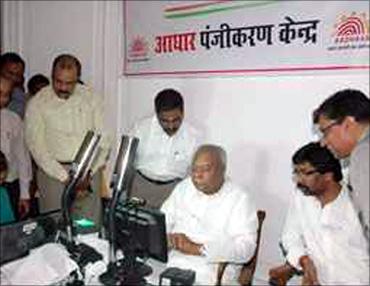
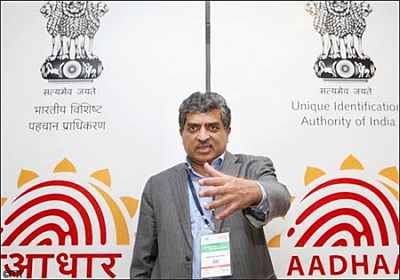

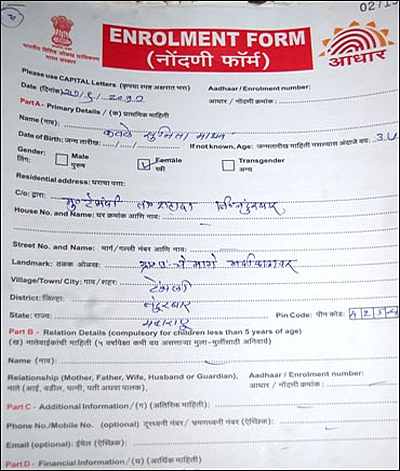

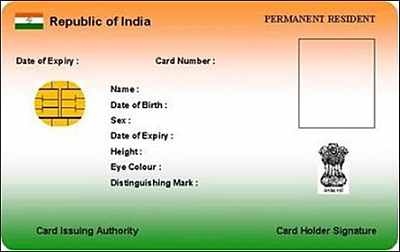
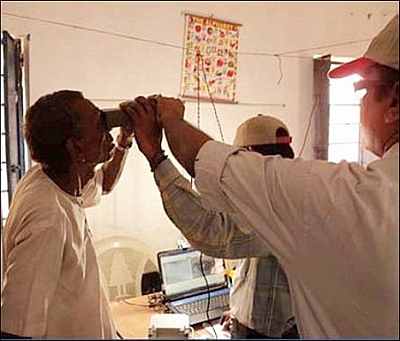
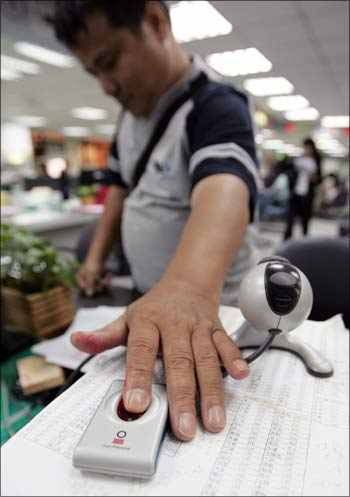

article